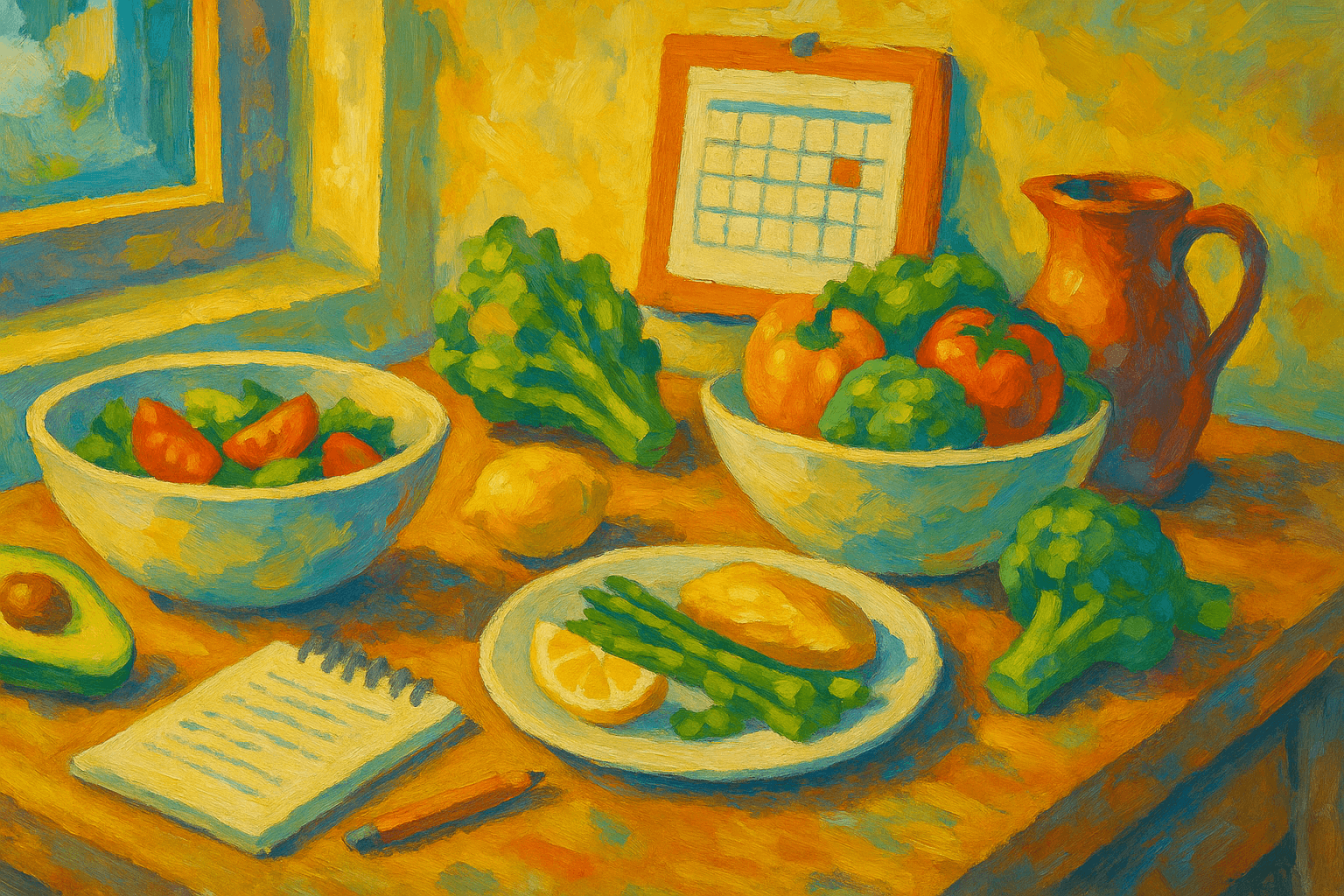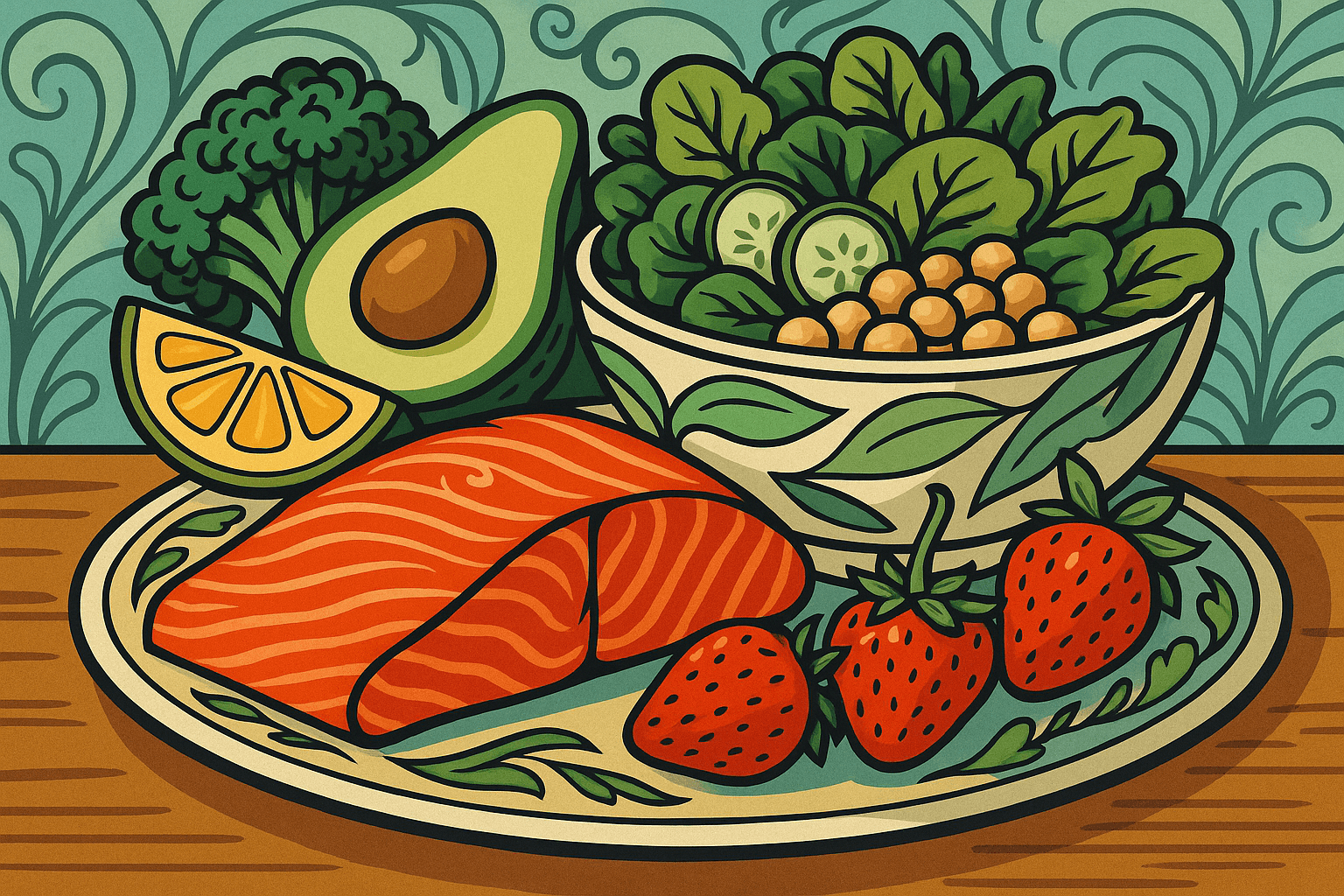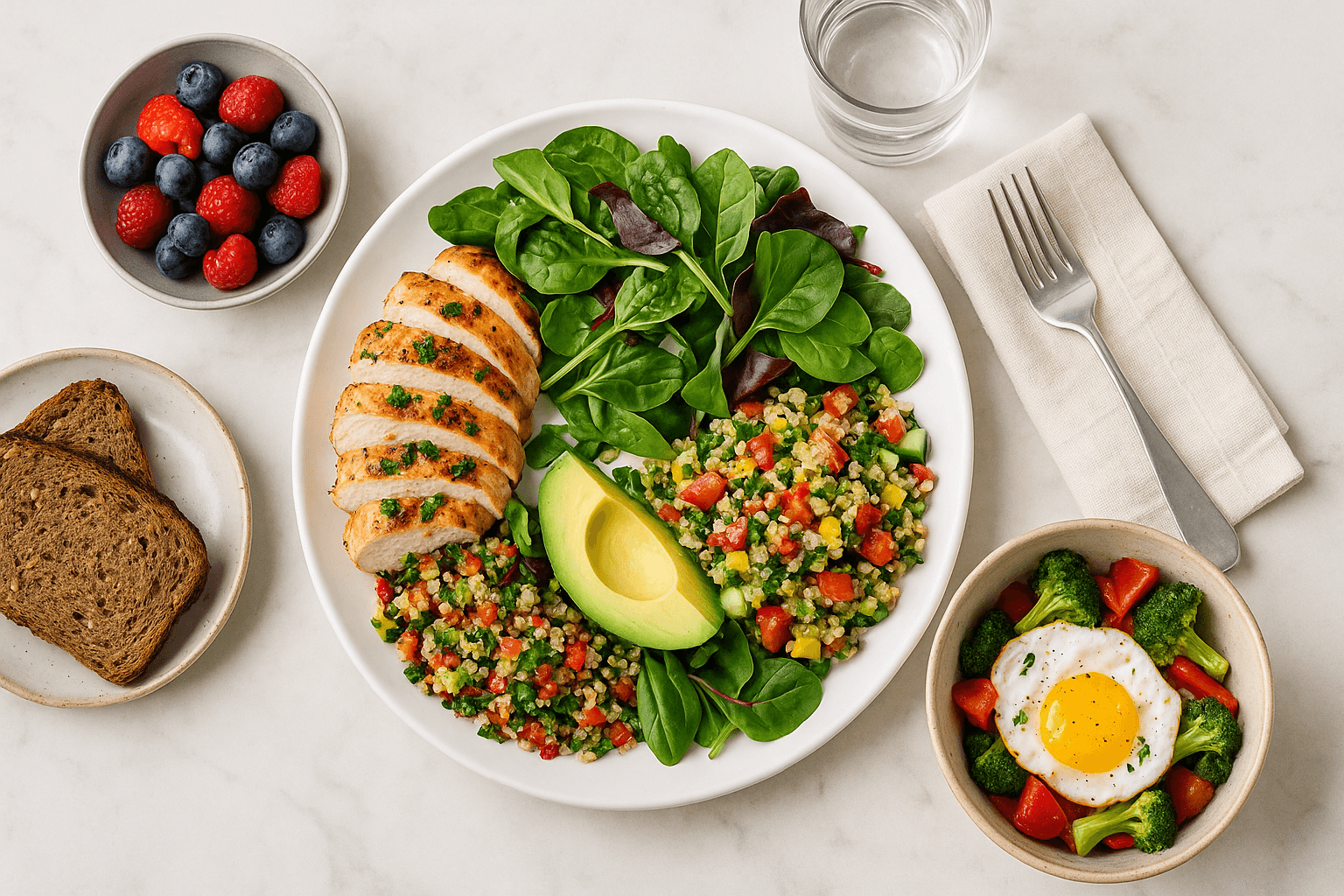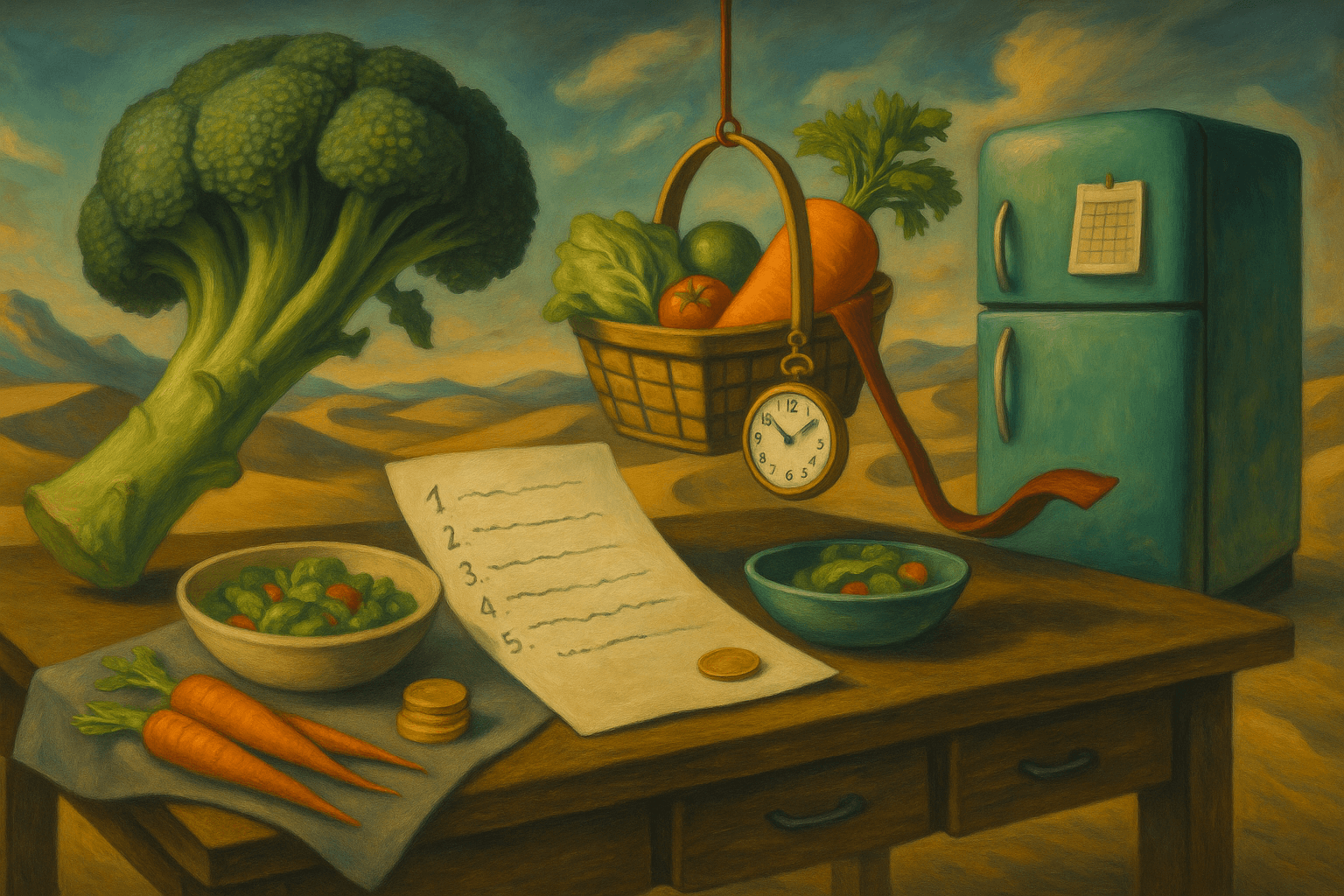Meal Planning Made Simple: How to Eat Well Without Losing Your Mind
Published on June 17, 2025

Why Meal Planning Matters
Meal planning isn’t about perfection or rigidity — it’s about reducing stress, eating better, and taking back your time. With a clear framework, you’ll save money, avoid waste, and feel empowered, not overwhelmed.
Why Meal Planning Works:
No more decision fatigue
Helps stick to nutrition goals effortlessly
Reduces food waste
Improves grocery budgeting
Supports emotional well-being by removing daily stress
Step 1: Know Your Baseline
Ask yourself:
How many meals will you eat at home this week?
What’s already in your fridge and pantry?
What’s your schedule like — high energy vs. low energy days?
Any dietary needs (plant-based, gluten-free, high-protein)?
Tip: Don’t overestimate your energy. Simplicity wins.
Personalize: Cook more on high-energy days, repeat meals on low-energy ones.
Step 2: Select Your Meal Templates
Keep it simple by choosing go-to meal styles:
Power Bowl: grain + veggies + protein + sauce
Stir-Fry: protein + veggies + grain
Soup & Salad combo
Sheet Pan: protein + veg + carb, roasted together
Wraps or Lettuce Cups
Oven Tray Bake
Smoothie + Toast
Pro move: Create a template bank on your phone or fridge.
Family tip: Let everyone pick a favorite weekly template.
Quick fix: Always have 1–2 “no-cook” options ready.
Step 3: Build a Weekly Grid
No need to plan every meal. Try this:
3–4 dinners with leftovers
2–3 repeat breakfasts
Batch 2–3 lunch staples
Name 3–5 go-to snacks
Use daily themes (Taco Tuesday!) for fun and structure.
Creative tip: Color-code meals by protein, prep time or veggies.
Next-level tip: Mix in frozen meals or batch-cooked items to start.
Step 4: Shop Smart (Not Hard)
Build your list from your grid:
Produce (spinach, berries)
Protein (eggs, chicken, tofu)
Pantry (oats, tinned beans)
Frozen (broccoli, peas)
Expert tip: Shop online to avoid impulse buys.
Bonus: Save a recurring grocery list in your notes app.
Efficiency tip: Choose multi-use ingredients.
Step 5: Batch Cook Like a Pro
Batch only the essentials:
1–2 proteins (grilled chicken, boiled eggs)
2–3 veggie servings
1–2 carbs (quinoa, sweet potato)
A few sauces or dressings
Visibility tip: Use clear containers.
Time hack: Listen to podcasts while you prep.
Flavor booster: Keep herbs and spice blends handy.
Step 6: Stay Flexible
Build in “planned flexibility”:
Leave 1–2 nights open for takeout or leftovers
Have emergency meals ready
Use cravings to choose snacks
Tweak your plan — that is the plan!
Mindset shift: 80% structure, 20% freedom.
Rescue rule: Always have 3 go-to ingredients to throw together a meal.
Sample 1-Day High-Protein Meal Plan
Breakfast: Greek yogurt + chia + berries + almond butter
Snack: 2 boiled eggs + cucumber
Lunch: Chicken + quinoa + spinach + tahini
Snack: Cottage cheese + pineapple
Dinner: Tofu stir-fry + brown rice
Bonus: 1 square dark chocolate + herbal tea
Vegetarian Swap:
Breakfast: Oats + banana + walnuts
Lunch: Lentil & kale soup + avocado toast
Dinner: Chickpea tikka + cauliflower rice
Time-Saver Version:
Breakfast: Smoothie + protein powder
Lunch: Wrap with leftover stir-fry
Dinner: Salmon + frozen broccoli + sweet potato
Low-Energy Edition:
Breakfast: Overnight oats + blueberries + almond butter
Lunch: Tuna lettuce cups + crackers
Dinner: Hummus plate + eggs + olives + pita
Final Word
Meal planning is a tool — not a test.
Start small: One template. One day. One prep.
Let it grow with you. Structure creates freedom, not stress.
Next step: Plan tomorrow’s meals only. Repeat from there.
Your calm, nourished future self will thank you.








